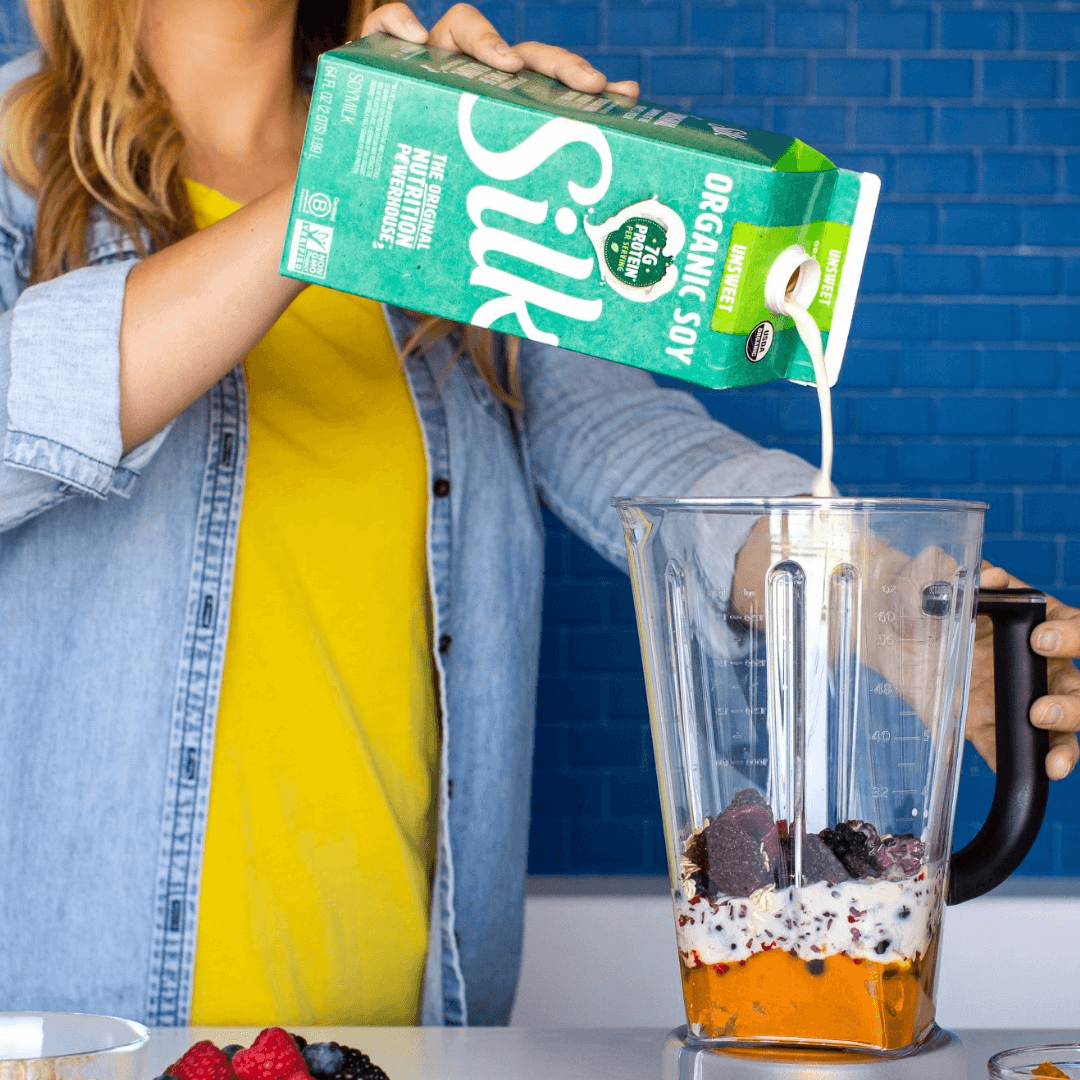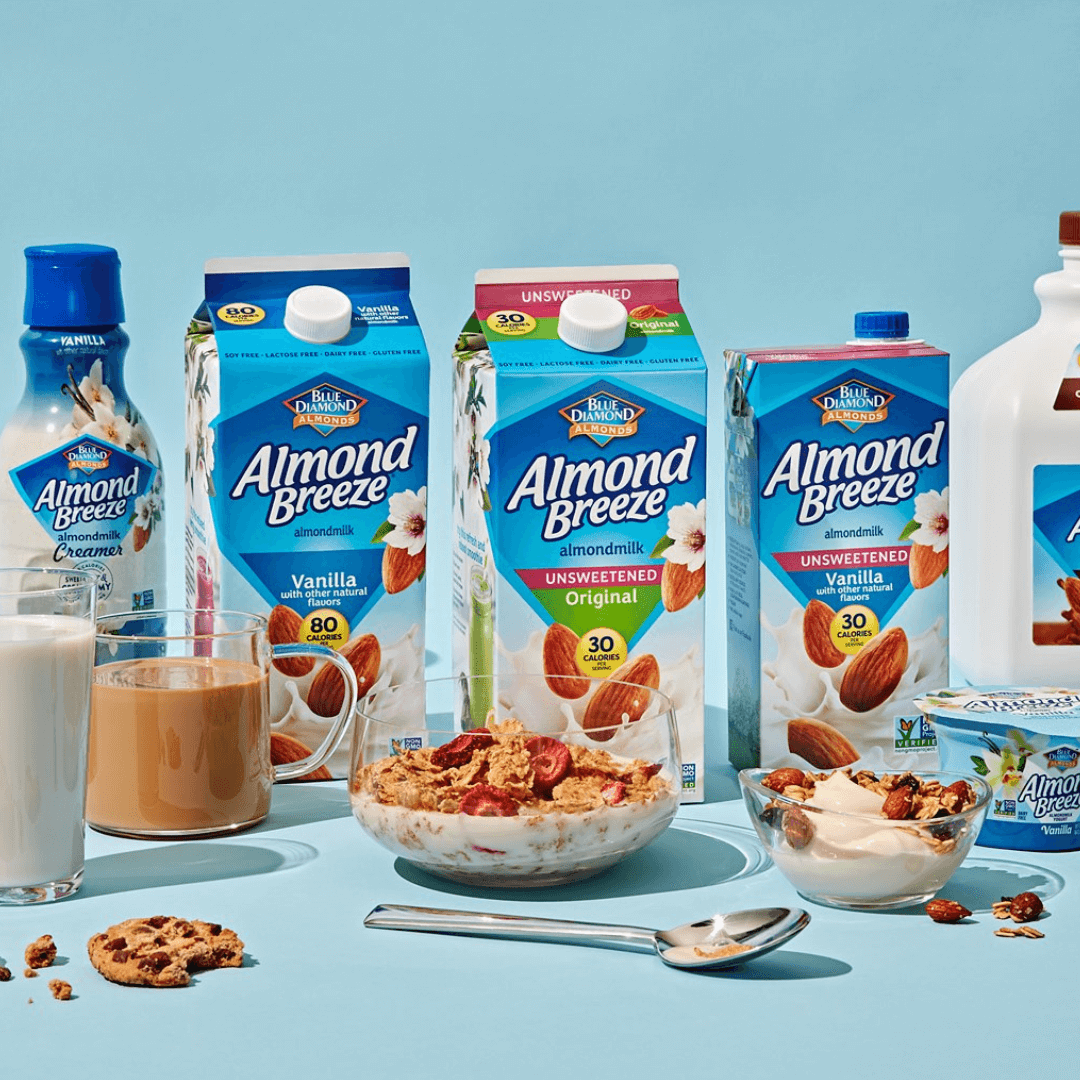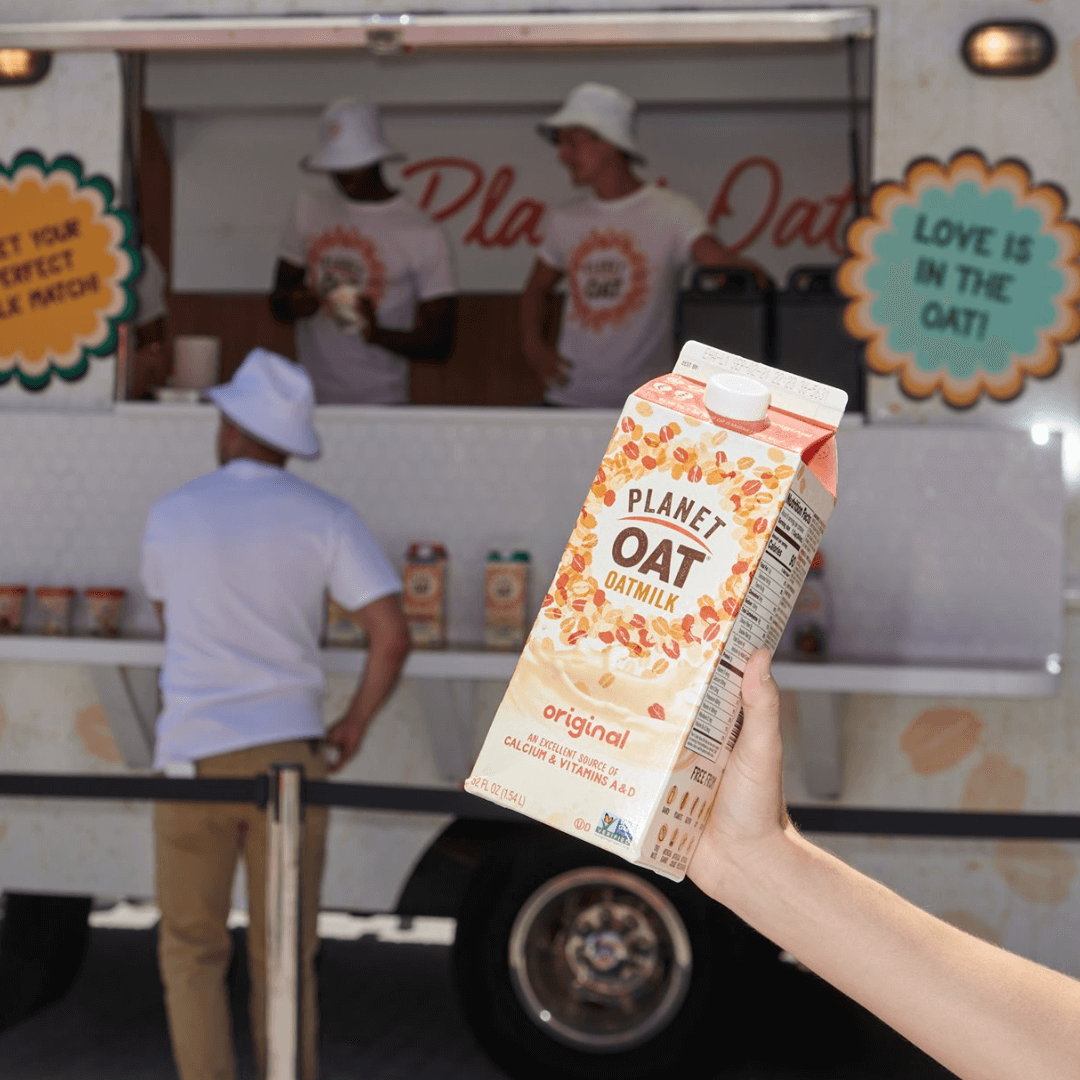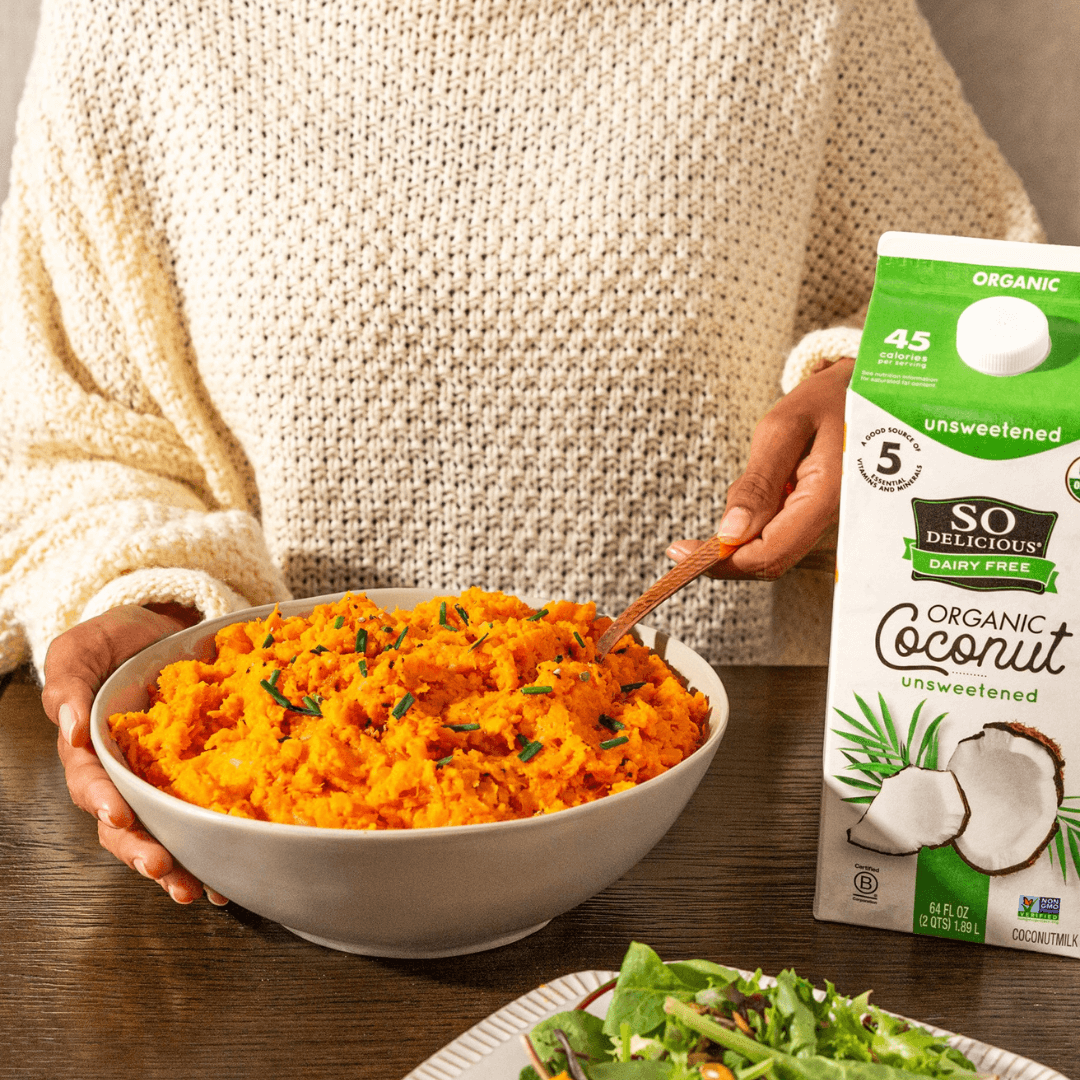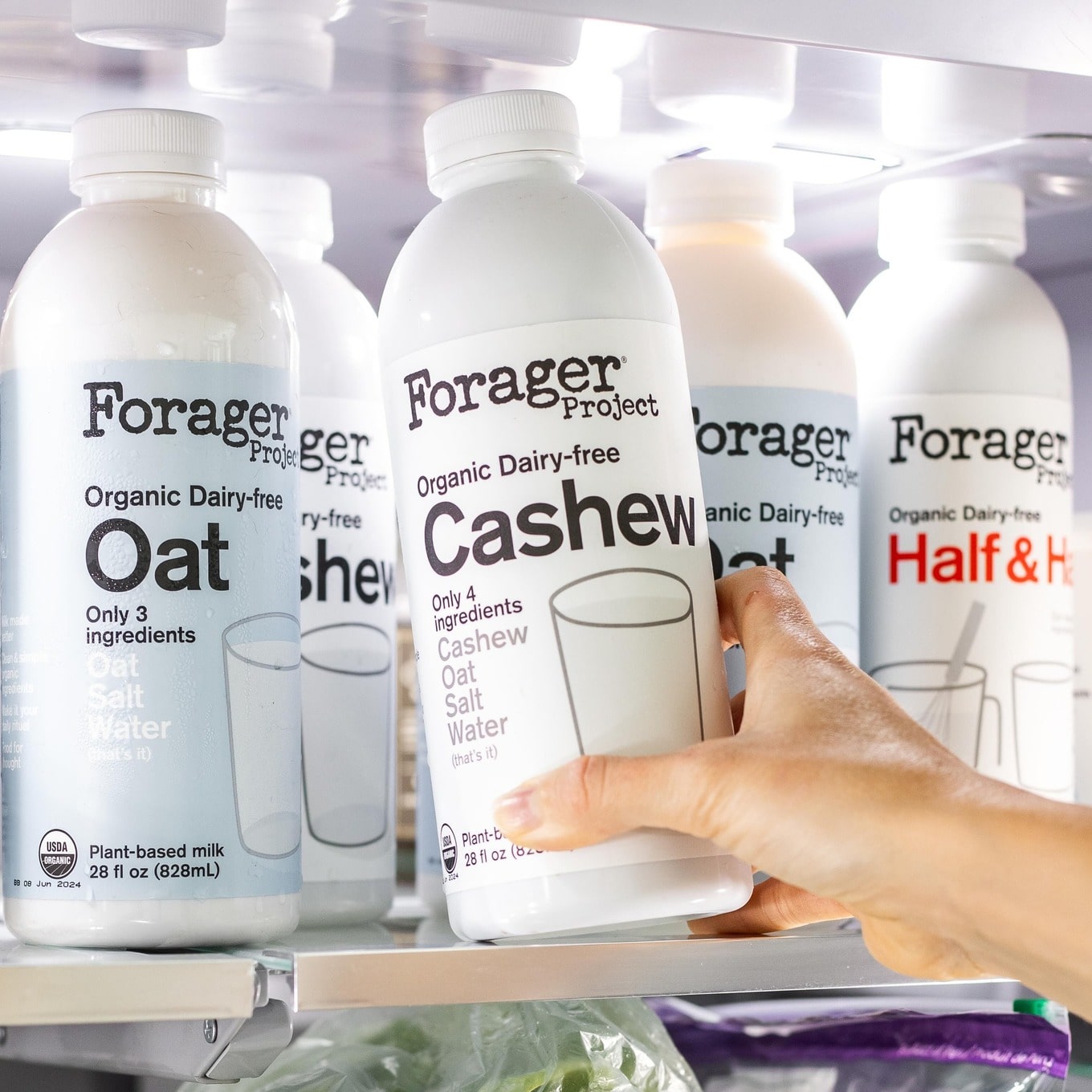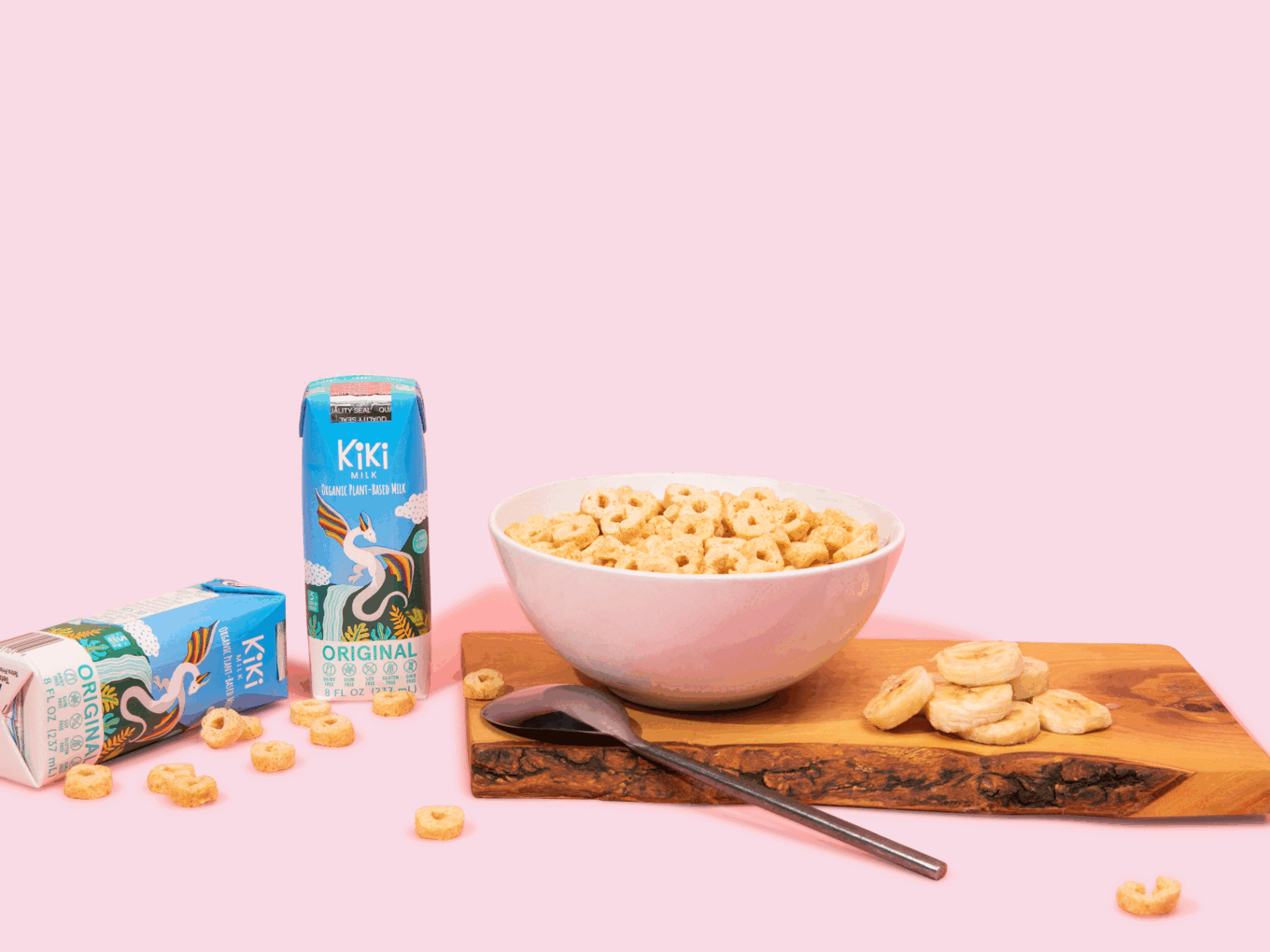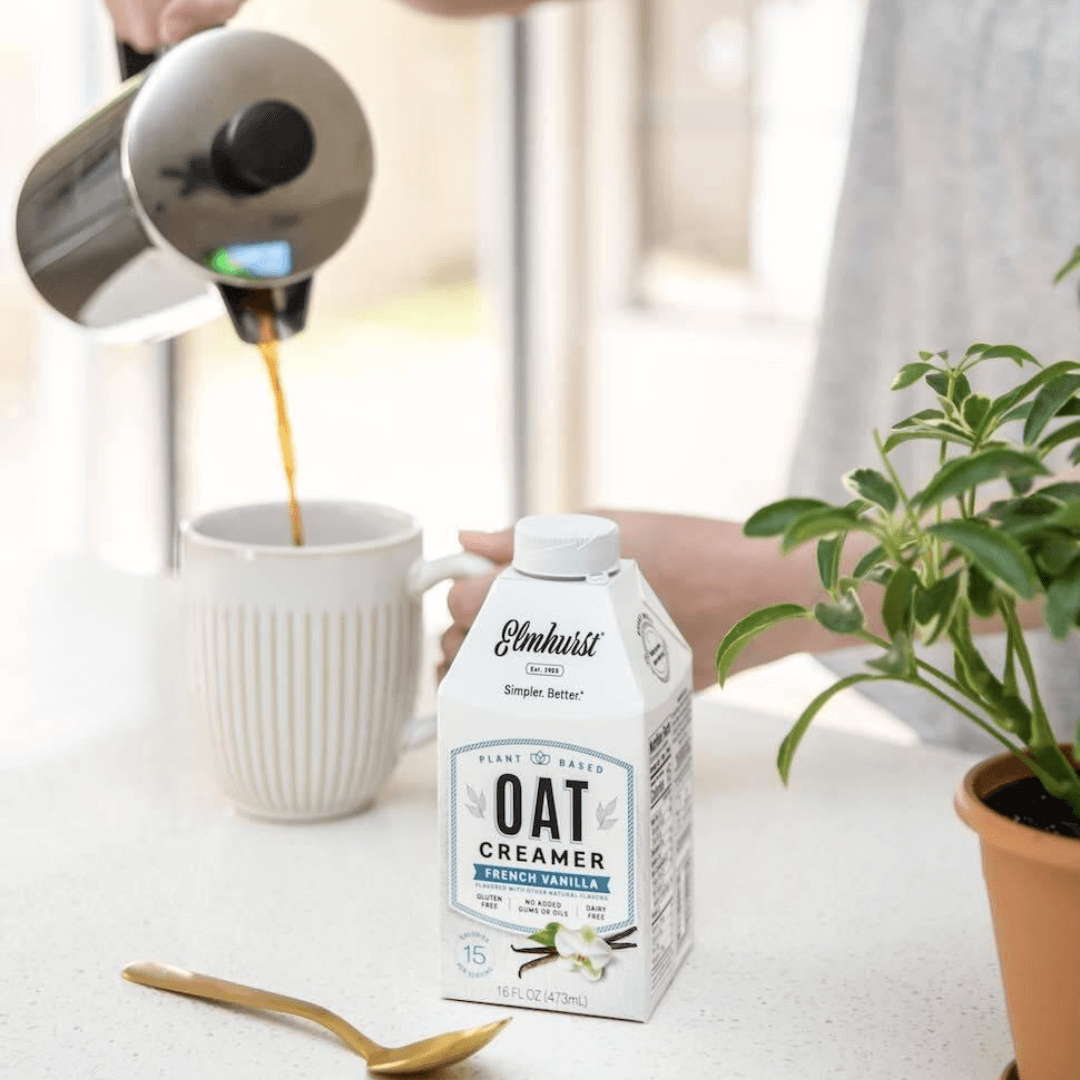Sixty-five percent of the global population is lactose intolerant, and yet most Americans (even those who are lactose intolerant) are convinced that they need to drink the mammary secretions of another animal to survive. Dairy is a food group after all, and we’re indoctrinated at a young age through our parents, marketing ads, and even the school cafeteria that milk does a body good. Are vegans missing out on optimum health benefits of cow’s milk, or is there a good reason to stay away? Here’s everything you need to know if you’ve got milk.
What’s in milk?
Flavored milk and lactose-free milk aside, the only thing that is added to milk during the udder-to-carton process is vitamin D. All commercially sold milk is fortified with this vitamin. The substance that ends up in a plastic gallon with a cheery illustration of pasture-raised dairy cows is a pasteurized concoction taken from lactating dairy cows.
Therein lies the issue—it’s not what’s added to milk, it’s milk itself that poses health risks. Each mammalian species produces milk that is unique to their offspring. Milk is essentially baby food, and in the case of cows, it’s meant to nurture and grow a 100-pound calf into a roughly 1,000-pound cow over the course of a year.
Compounds in milk—such as IGF-1, a growth hormone—spur this development. While necessary for baby cows, too much IGF-1 can be harmful to humans. A mounting body of scientific research has linked the hormone specifically found in cow’s milk to increased cancer risk, as it may trigger unregulated or excess growth of cancer cells.
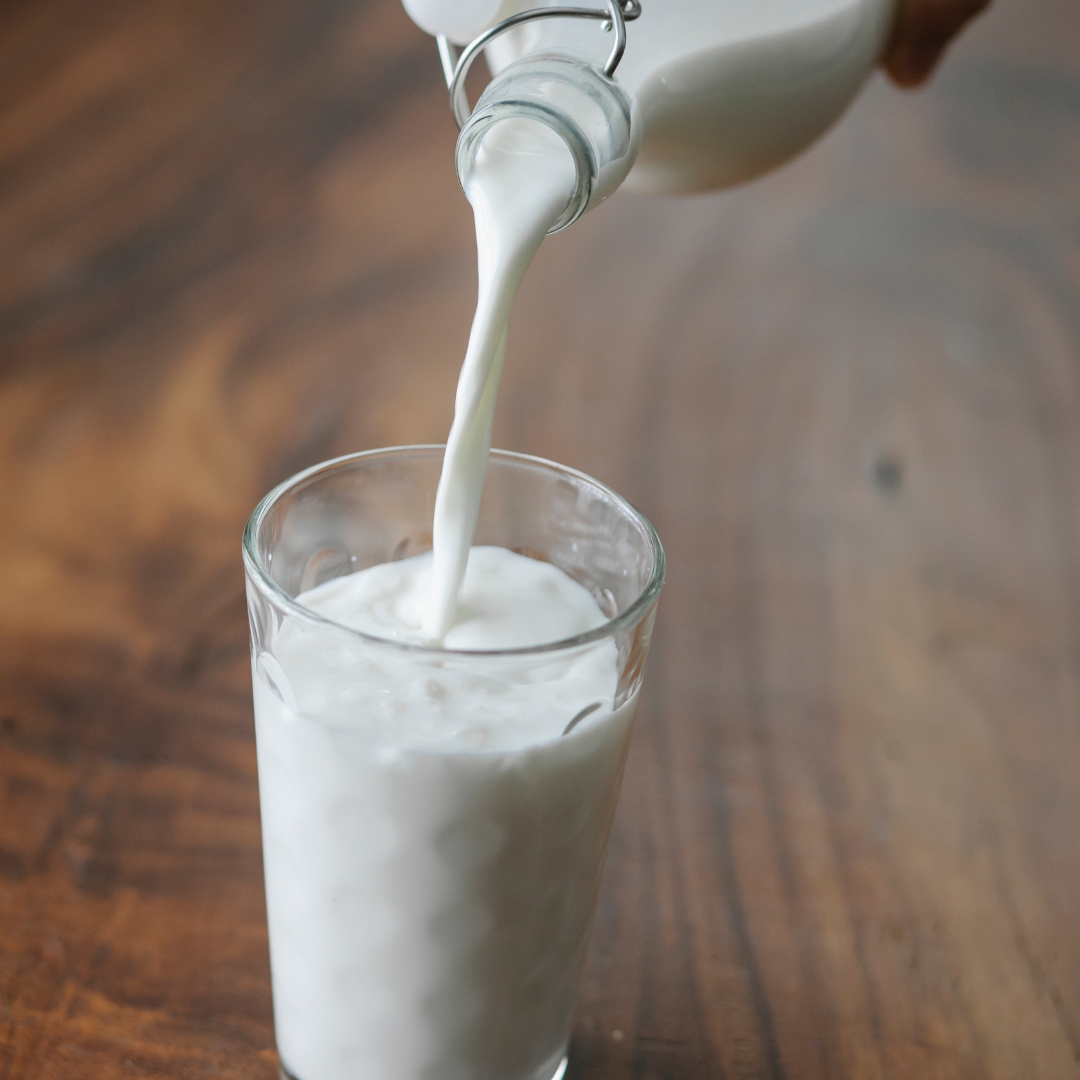 Canva
Canva
In addition to natural growth hormone, cow’s milk also contains a cocktail of bovine sex hormones. A label claiming “no added hormones” is inconsequential, because the animal’s hormones naturally pass into her milk. Due to the speed in which dairy cows are impregnated, give birth, and are then re-impregnated (yes, mammals must give birth to produce milk), most commercially available milk comes from a pregnant cow.
Like humans, a pregnant female cow’s body is raging with hormones including estrogen, progesterone, cortisol, testosterone, and others. These hormones can all be found in the glass of 2 percent served with dinner or the whole milk used in a Starbucks latte.
Dairy milk also contains lactose—a sugar molecule. Lactose is the culprit of lactose intolerance. Everyone is born with the ability to digest lactose, but as we age, most lose this ability because nature believes we should be eating solid foods and therefore have no use for breast milk. Mammalian bodies stop producing lactase—the enzyme needed to break down lactose—after infancy.
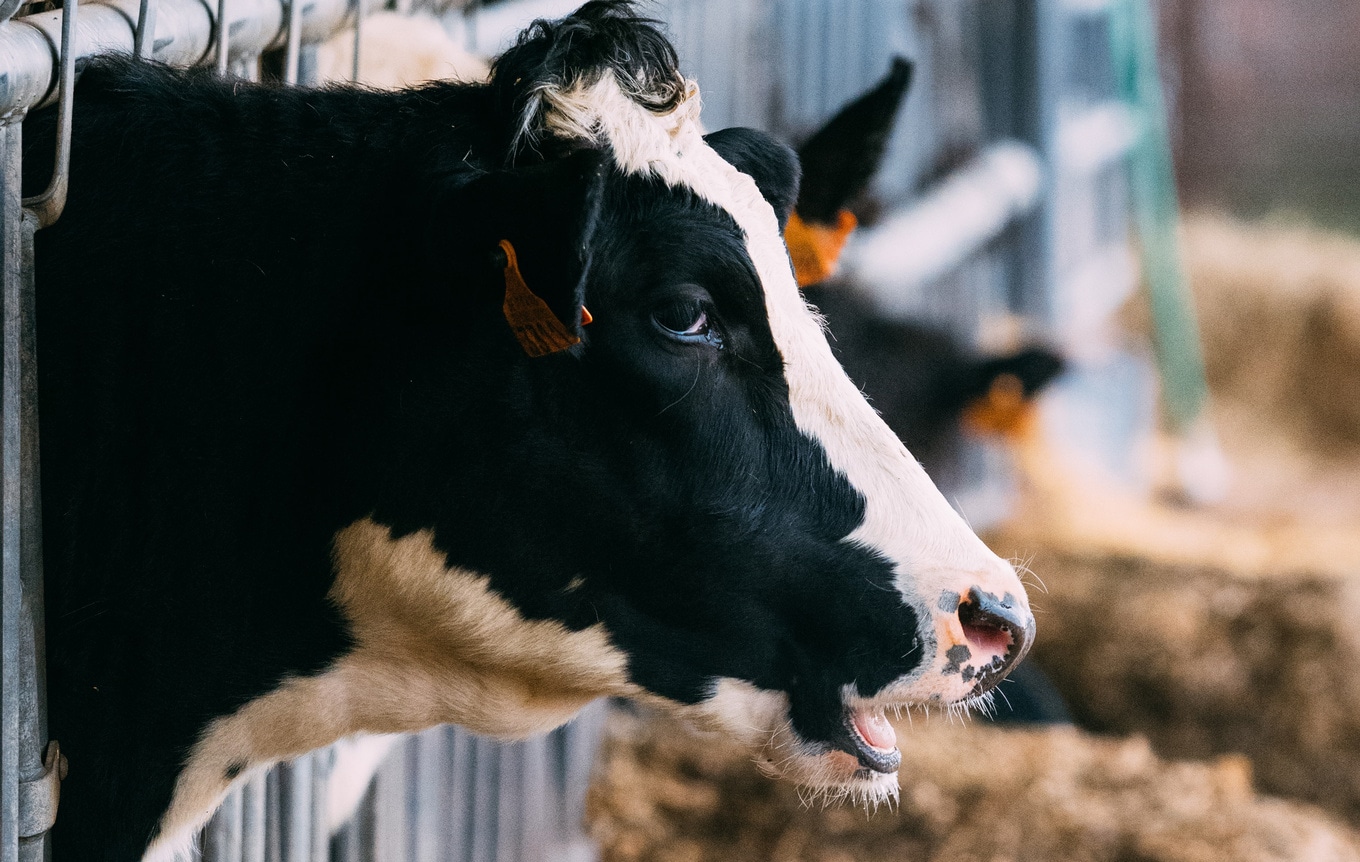 Unsplash
Unsplash
This explains why the majority of humans are lactose intolerant as well as why lactose intolerance symptoms (bloating, gas, diarrhea, stomach pain), may get more severe over time. Note: lactose-free milk isn’t truly lactose-free—it’s treated with a lactase enzyme which pre-digests the lactose for you.
Neu5Gc is another component found in all dairy milk. It’s a sialic acid found in many mammals, yet it is a foreign compound to human bodies. As such, when Neu5Gc enters the system, the body mounts an immune response, triggering inflammation. While this inflammation may be acute to start (meaning temporary), regular consumption of dairy milk (and therefore a constant influx of Neu5Gc) can lead to a chronic inflammatory condition which sets the stage for a number of diseases including cardiovascular issues and cancer.
Is milk healthy?
To define what is healthy, it’s necessary to look at the complete nutrient package.
There’s no denying that milk does provide some essential nutrients including eight grams of protein, about a third of the recommended daily allowance for calcium, and some vitamin D (thanks to fortification). The dairy industry capitalizes on these nutrients to promote the idea of health, but ads fail to mention the other components of milk that are less than beneficial.
 Canva
Canva
All milk—even skim varieties—contains trans fat, a harmful substance that the USDA claims is not safe in any amount. Trans fat is not always apparent on nutrition labels, because according to food labeling laws, a company may write “0” for any nutrient that comes in at under 0.5 grams per serving. Trans fat can cripple arteries, impede blood flow, and eventually lead to heart disease when consumed in excess.
Milk also contains saturated fat and cholesterol which can lead to similar ailments. As mentioned earlier, dairy milk naturally contains several components that have been linked to an increased risk of cancer.
Consuming cow’s milk for its protein or calcium content is like consuming artificial fruit gummies for their vitamin C content. Sure, both contain necessary nutrients, but they also contain a whole lot of other things that aren’t good for you. It’s all about the total package, and milk simply doesn’t cut it.
Milk and the environment
Meat gets a bad rap for its environmental toll, but despite milk’s massive demand on natural resources, it often gets a pass. At the very least, people don’t tend to think of the dairy industry’s impact on the environment as much as meat, and if they do, they often point their finger at those darn thirsty almonds.
Here are the facts: it takes 1,000 gallons of water to produce one gallon of milk. Broken down by the glass, that’s 120 liters of water for every eight-ounce serving of cow’s milk. In comparison, only 74 liters of water are needed to produce an eight-ounce serving of almond milk, and a mere 10 liters of water are needed for the same amount of oat milk.
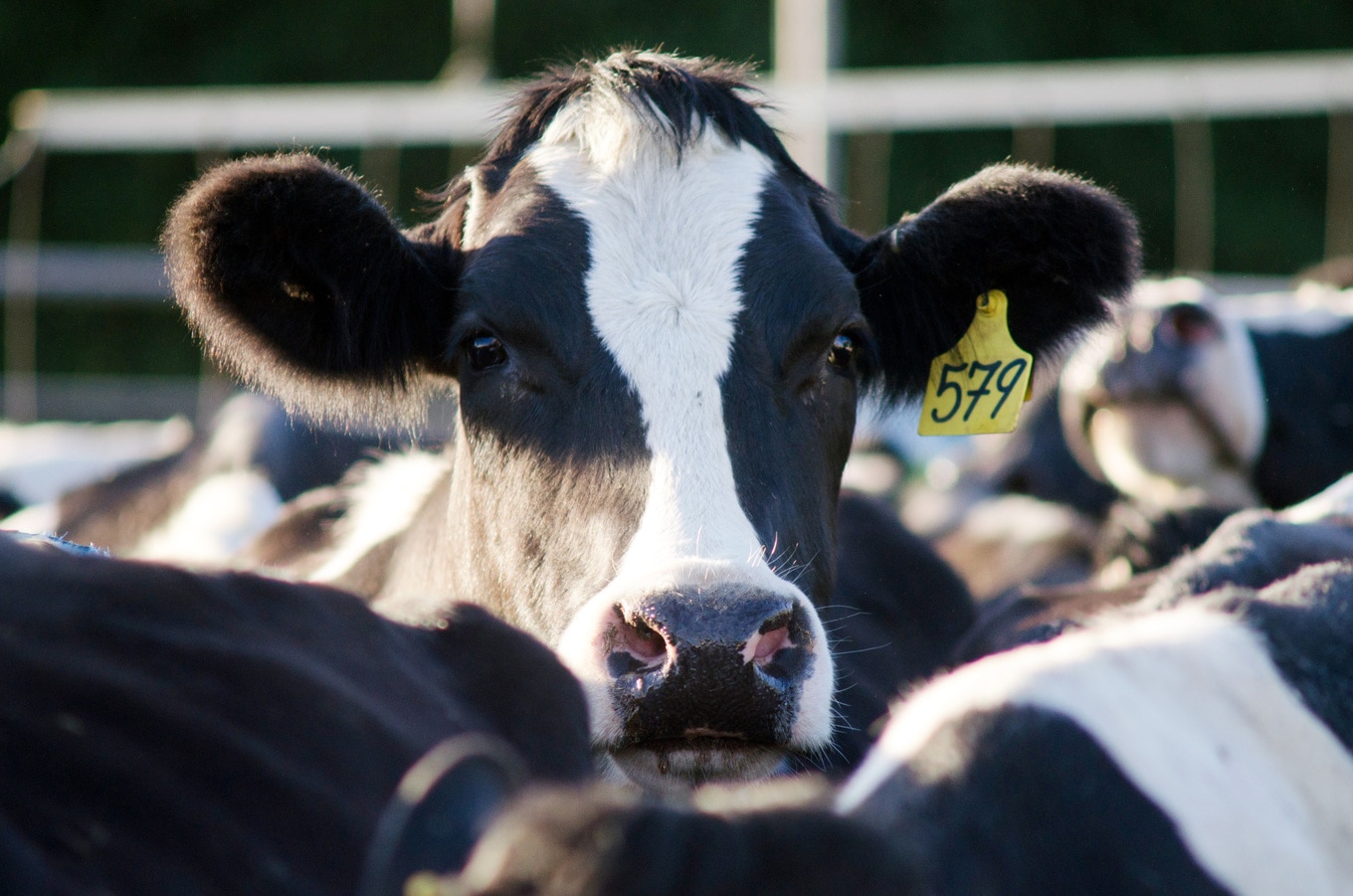 Getty Images
Getty Images
Also on the topic of water, the Environmental Protection Agency has faulted the dairy industry as a major contributor to US water pollution, as the runoff from its manure lagoons—enormous cesspools of cow excrement—can seep into the soil or overflow. These pools are so difficult to seal completely, and the industry is even allowed a certain amount of leakage, determined by the state. For example, Wisconsin dairy farmers may have up to 500 gallons of leakage per acre per day. Considering a 2,500-herd dairy farm produces as much waste as a city the size of Minneapolis per year (90 million pounds of waste), one can imagine how vast and deep those manure lagoons can be.
Hand-in-hand with cow excrement comes emissions and climate pollution. The dairy industry as a whole is responsible for 4 percent of the world’s total greenhouse gas emissions. While that number may seem insignificant, think about it as just one food. If other foods were just as damaging, we’d hit our global total of emissions with just a few food groups without even adjusting for the emissions of the transportation or industrial sectors.
In California alone—America’s largest dairy producer—the industry accounts for 45 percent of the state’s total methane and 38 percent of the overall nitrous oxide emissions. And the majority of it results from cow burps and farts. They seem harmless, but with over 1.7 million “happy” milking cows in California, these enteric emissions add up into a big problem.
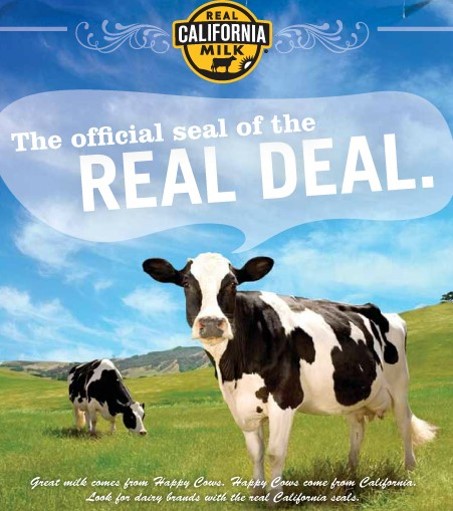 Real California Milk
Real California Milk
Considering it takes far more land to raise a 1,000-pound cow than any plant, milk also requires an incredibly wasteful amount of land. To compare, 1.75 square meters are needed to produce one eight-ounce glass of cow’s milk, whereas only 0.25 square meters and 0.1 square meters of land are needed to produce the same amount of oat and almond milk, respectively. For a grander perspective, the land needed to sustain America’s consumption of fluid milk is equal to the size of Virginia. Imagine, an entire state of cows, manufacturing facilities, and milking sheds packed shoulder-to-shoulder, wall-to-wall, as far as the eye can see.
When it comes down to it, researchers at the University of Oxford said it best: the single most effective way to reduce one’s impact on the environment is to go vegan. Ditching meat isn’t enough. Milk is an environmental villain, too.
BECOME A VEGNEWS VIP: Get exclusive product deals, freebies, and perks galore!
Vegan milk nutrition
No matter the lens you look through—health, environmental, or ethical—cow’s milk is not the optimal option. But do non-dairy alternatives stack up in regards to nutrition? Many do.
According to the updated 2020 to 2025 US Dietary Guidelines, fortified soy milk is nutritionally equivalent to cow’s milk. Cup for cup, soy milk contains the same amount of protein (8 grams), calcium (30 percent of the RDA), and vitamin D (15 percent of the RDA). While unrecognized by the USDA, pea milk provides a similar nutritionally robust profile. Other milks—such as oat, almond, cashew, hemp, flax, and coconut—may be fortified with calcium and vitamin D, but do not naturally contain as much protein.
However, there are other benefits to these milks, including their amazing taste. Unlike dairy milk, vegan milk also contains fiber—up to two grams per serving for soy and oat. Dairy-free milk is also free from cholesterol, hormones, and trans fats. So drink up.
Soy milk
Before almond, coconut, and oat milk were readily available at coffee shops, vegans and the lactose intolerant relied on soy milk. Made from soybeans, this plant milk contains the same amount of protein, calcium, and vitamin D as cow’s milk. Plus, it makes for a next-level, frothy latte.
Almond milk
Smooth and nutty, almond milk is another dairy-free option perfect for cereal, smoothies, morning coffees, and more. Naysayers often denounce this nut milk for the amount of water it requires, but compared to the 1,000 liters of H2O required to produce one gallon of cow’s milk, almond milk is a far better choice.
- 365 by Whole Foods
- Blue Diamond Almond Breeze
- Califia Farms
- Dream Non Dairy
- Elmhurst 1925
- Malk
- Mooala
- New Barn Organics
- Orgain
- Pacific Foods
- Plenish
- Silk
- Three Trees
- Trader Joe’s
Oat milk
Made from the simple oat, this non-dairy milk has skyrocketed to superstardom in recent years—so much so that Starbucks couldn’t keep it stocked after first introducing it in stores. Today, Oatly is perhaps the most recognizable brand of oat milk, but it’s not the only one gracing store shelves.
- 365 by Whole Foods
- Califia Farms
- Dream Non Dairy
- Elmhurst 1925
- Malk
- Minor Figures
- Oatly
- Oatsome
- Pacific Foods
- Planet Oat
- Plenish
- Rise Brewing Co.
- Silk
- Three Trees
- Trader Joe’s
- Willa’s
Coconut milk
This alternative milk has long been used by culinarians. From creamy curries to your next baking project, coconut milk has a variety of sweet and savory uses.
- 365 by Whole Foods
- Califia Farms
- Dream Non Dairy
- New Barn Organics
- Pacific Foods
- Plenish
- Silk
- So Delicious Dairy Free
- Trader Joe’s
- Vita Coco
Cashew milk
Cashews make for an extra velvety, non-dairy ice cream base, so it’s no surprise cashew milk is on the rise as an alternative to cow’s milk. Today, more and more brands are offering this nut milk.
Alternative milk
Beyond the options we’ve outlined here, there are an endless number of vegan milks made using alternative proteins. Hemp, rice, barley, pea, and macadamia nuts can also be used. Today, you can even find ultra-luxe pistachio milk or potato milk.
Banana
Chickpea
Flax
Hazelnut
Hemp
Macadamia
Pea
Pistachio
Potato
Rice
Sunflower
Blends
Can’t choose between oat and soy? Coconut or cashew? Hemp or rice? Thankfully, there are a number of blended options on the market to ease decision fatigue.
Creamers
Looking for a plant-based creamer to go with your morning joe? The brands below offer a number of vegan creamers for when you don’t want to drink it black.
For more on vegan milk, read:
JUMP TO ... Latest News | Recipes | Guides | Health | Subscribe
Here at VegNews, we live and breathe the plant-based lifestyle, and only recommend products we feel make our lives amazing. Occasionally, articles may include shopping links where we might earn a small commission, but in no way does this effect the editorial integrity of VegNews.


